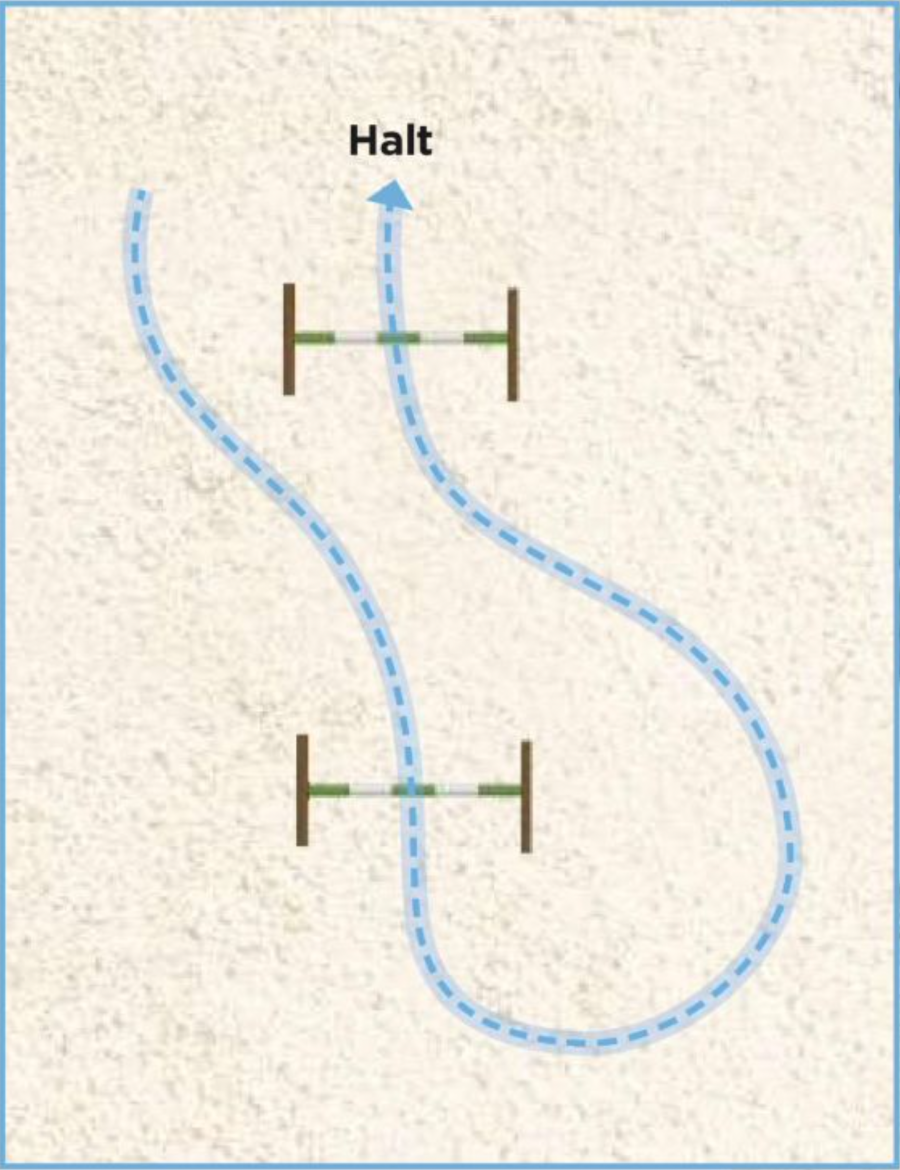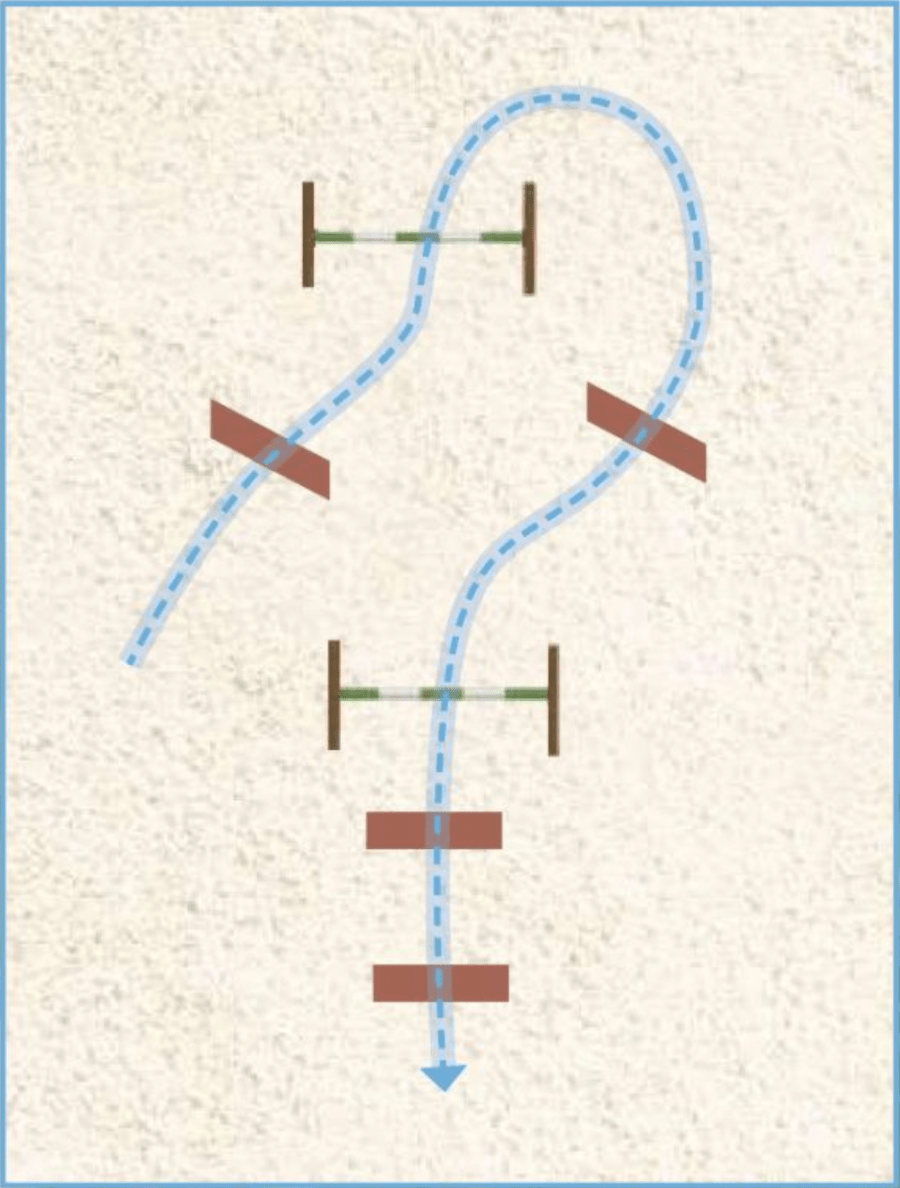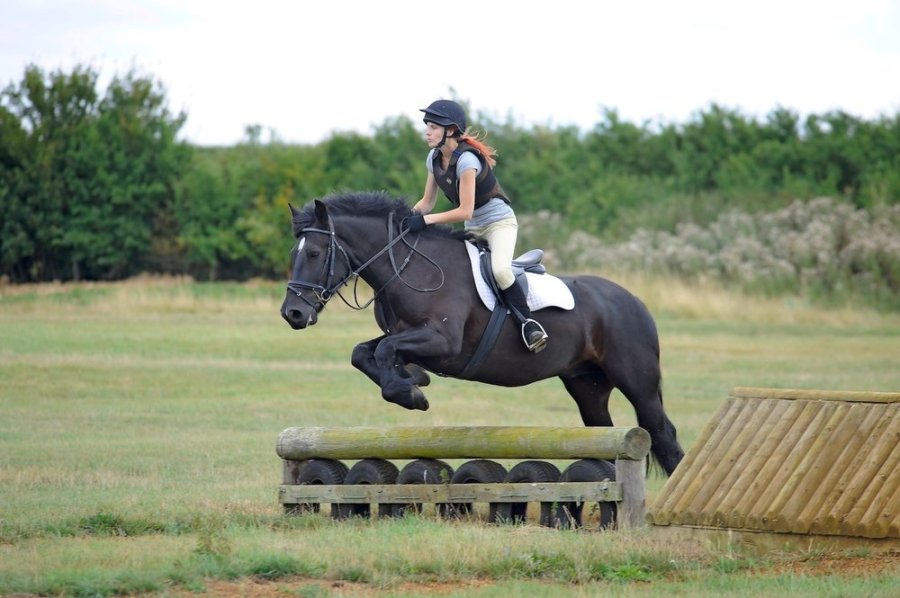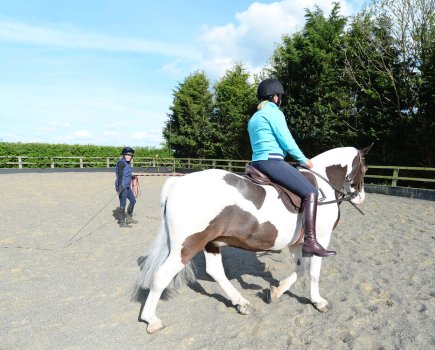Struggling with winter training? Six-time Badminton winner Lucinda Green shares some useful exercises that will enlist your horse’s attention and prepare you for showjumping and cross-country.
“When going cross-country there are two things you need to have in place – focus and engine. We can use any jumps we want to achieve this,” says Lucinda. “First, focus. Train your horse to pay attention to your aids, understanding what it is you’re asking of them and listening to your direction.”
Before starting, make sure you warm up properly first using a range of transitions on both reins.
Exercise 1: Seeing the fence
This first exercise involves learning to pinpoint the moment your horse sees a fence. It helps them to polish their focus before you try trickier combinations.
“People make the mistake of rushing their horse,” says Lucinda. “They see a stride and they kick on, but just because you make them go faster doesn’t mean they’ll understand the fence any quicker. Give your horse time to process what’s in front of them. Don’t take the first stride you see – stay together.”
Set it up: Put up one fence in your arena. You can use a small upright, filler or cavaletti. Don’t worry if there are other jumps around – these distractions are great practise for an event with other fences in the arena.
How to ride it:
- Wherever your fence is placed in the arena, turn off from the outside track in a straight line in trot.
- Rather than thinking you need to ‘warn’ your horse about the jump, give them a chance to see it instead.
- Ensure your horse is above the bit so they can see the fence. You should feel them lock on when they’ve seen it.
- Take it easy. You’re not in a hurry. If you need to slow your horse’s trot, try rising in a slower rhythm.
- Go in a straight line after your jump and ask for a halt. Insist that your horse stops as soon as you ask them to. This trains them to stop on their hocks. Pick a point on the fence line and ensure that you’ve stopped by that point.
The next step: If you’ve up for a challenge, experiment with your approach. Try a shorter route, or come to the fence from a bend. It’s not a big fence, but you can make it a trickier exercise by dotting a few of these small fences around the arena and making yourself a mini course. Once you feel confident in trot you can work in canter.
Exercise 2: Two uprights, then a halt

Exercise 2
“We need to our horse a framework of disciplines, or boundaries,” says Lucinda. “Keep them cuddled between your legs. Think of it as being in ‘the tube’. Your calves are linked to their eyes by an invisible wire, so you’re steering their eyes with your legs. Your hands are directly linked to their brain through the bit. Everything is connected. You have seven assets (two legs, two hands, two eyes, and your weight) to influence their actions.”
This exercise is great for testing that connection and teaching your horse to listen to your aids by asking them to turn back on themselves – jumping the fence behind them rather than going forwards as they would expect.
Set it up: Put up two fences on a line with plenty of space between them.
How to ride it:
- Pick up a steady, rhythmic canter and approach the first upright.
- Don’t worry if your horse isn’t round. Keep yourself upright and looking to the fence.
- When you’re in the air, look for your line towards the next fence as you curve back round to jump the second upright.
- Become a part of your horse. They can’t walk the course, so you need to tell them where to go – and they need to listen.
- Choose a point on the fence line and halt when you reach it. This will teach discipline. It’s a handy way to slow a rusher too.
Exercise 3: Adding in more fences

Exercise 3
This next exercise combines the first two exercises, using two uprights and four small filler jumps.
“It’s so handy to use little jumps like these as they’re easy to move,” notes Lucinda. “It means you can create lots of different exercises very quickly without too much heavy lifting. You also don’t need a big arena for them.”
Set it up: Add two fillers either side of each fence halfway between the two fences. Add the other two fillers after the last fence.
How to ride it:
- Take a moment to figure out your lines so you can guide your horse accurately.
- Other than checking on the engine and offering direction, you should leave the actual jumping to your horse.
- Give them room to stretch their neck to see the fences.
- Their canter shouldn’t change between the smaller and the larger jumps.
The next step: To take it up a notch, add a corner jump in place of the last filler.
Meet the expert: Legendary event rider Lucinda Green MBE is a six-time winner of Badminton. She is a former World Champion, two-times European gold medalist and was a team silver medalist at the 1984 Olympic Games in Los Angeles.
Check out our subscription offer









